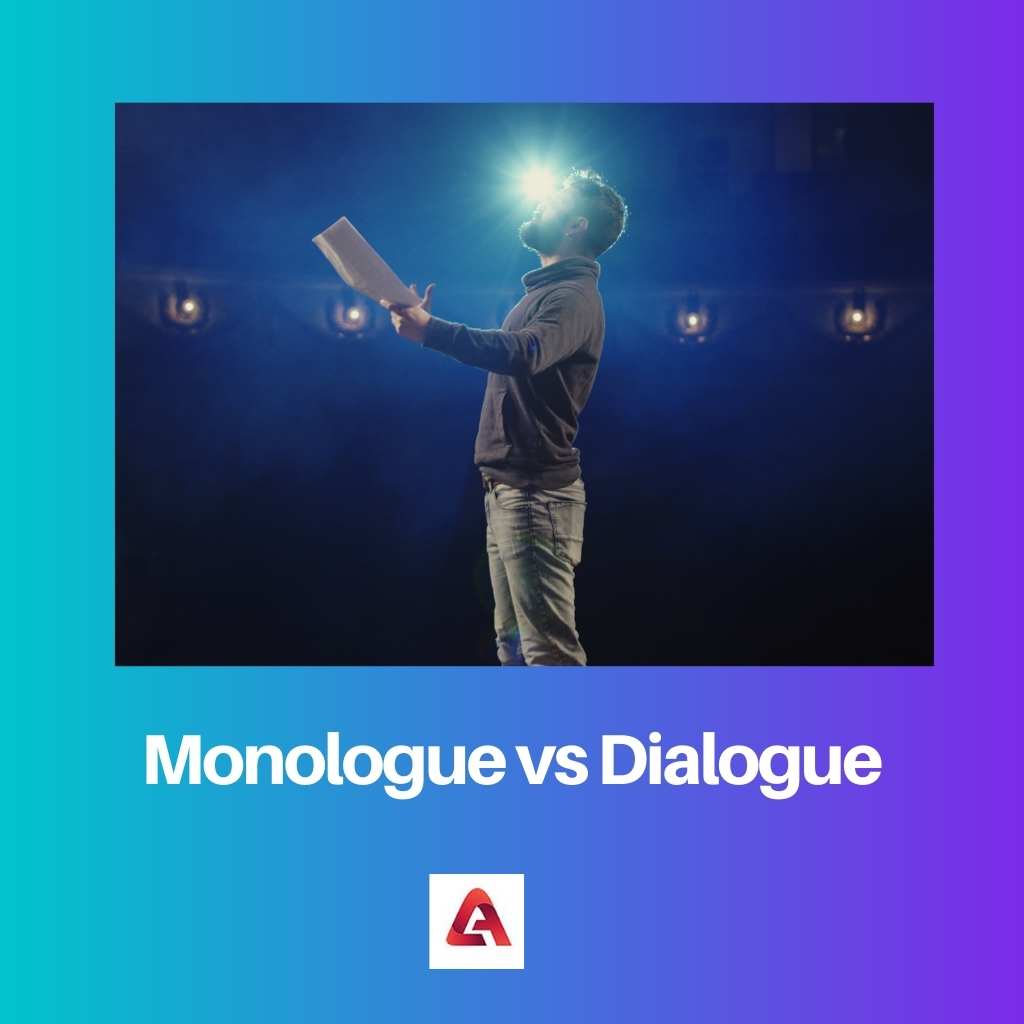Monologue and dialogue are two very important terms that are commonly used in the field of literature. As a student of literature, it is very important to know the differences between the two.
Unlike monologue, with the help of dialogue, one or more people can exchange thoughts and ideas.
Key Takeaways
- A monologue is a speech delivered by a single character in a play or narrative, while a dialogue involves two or more characters conversing.
- Monologues reveal a character’s thoughts, feelings, or backstory, whereas dialogues develop relationships and move the plot forward.
- Monologues can be performed independently, such as in auditions or solo performances, while dialogues require interaction between characters.
Monologue vs Dialogue
A monologue is a speech or performance given by one person, while a dialogue is a conversation between two or more people. Monologues are used in theatre or film to convey a character’s thoughts or feelings. Dialogues are used to develop relationships between characters and advance the plot.

A monologue is a type of speech where the person or the character tries to express his feelings, thoughts, or ideas through a speech that is long. It does not require or involve other characters.
Monologues are used in several types of literary works such as dramas and films which are dramatic works and also non-dramatic works like poetry.
Dialogue is considered to hold a very important role in all works of fiction. It is used in several types of literary works such as short stories, dramas, films, novels, etc.
The main purpose of a dialogue is to make the characters interact to make or change decisions within themselves.
Comparison Table
| Parameters of Comparison | Monologue | Dialogue |
|---|---|---|
| Definition | A monologue is a type of long speech which is given by a character | A dialogue is a conversation that takes place between two or more characters. |
| Type of communication | It is one-way communication. | It is two-way communication. |
| Usage | A monologue is less commonly used. | Dialogue is more commonly used. |
| Involving of interaction | Involves no interaction. | Involves verbal interaction. |
| Used for | It is used for expressing one’s thoughts or ideas mainly of the character. | It is used for exchanging thoughts and ideas between two or more people to come to a conclusion. |
| Boredom | It has a higher chance of getting boring. | It has lower chances of getting boring. |
| Number of characters involved | Only one character is involved. | A minimum of two characters is involved. It can exceed any number of characters. |
What is a Monologue?
The word monologue has been derived from the two Greek words, “Monos” and “logos” meaning “alone” and “study” respectively. It is a speech that is delivered by one single character, mainly for the expression of their thoughts.
It sometimes also addresses the audience or another character indirectly. Monologues have a close resemblance to poems.
Some people are likely to get confused between monologues and apostrophes, but they are two distinct terms with a different meanings in literature. Ancient Roman Theatre was found to feature monologues more commonly than the Greek theatres.
The inner workings of the character and the motivations can be understood best by monologues.
There are mainly two types of monologues:-
1. Interior monologue- It is a type of monologue where the character is found to express his or her thoughts in front of the audience.
2. Dramatic monologue- It is a type of monologue where one character expresses his or her thoughts to some other character.
Monologues can be divided into two more types:-
1. Active Monologue- Here the speech is given by the character for the achievement of a clear goal.
2. Narrative Monologue- this type of monologue mainly involves storytelling by the character. It is done in the past tense.
What is a Dialogue?
The term dialogue has also been derived from a Greek word, “dialogues” which means conversation. It is mainly an exchange of conversation between two and more people.
It has a close association with Plato’s developed “Socratic Dialogue”, but relations with other traditions are also found including Indian tradition. Through dialogues, the characters are made to interact, make and change their decisions.
The thoughts and ideas of the characters are impossible to understand otherwise. They help the readers or the audience to understand the personalities of the multiple characters in the drama or play, and thus come to a conclusion. In short, it triggers the advancement of the plot.
Dialogues are the backbone of a drama. Dialogues also have importance in almost all works of fiction.
It is with the help of dialogues one can differentiate between the characters. Dialogues help to portray the internal conflict between the characters.
Dialogues are of two types:-
1. Inner Dialogue- When the dialogues involve one single character and his mind, it is known as inner dialogue.
2. Outer Dialogue- When the dialogues between two characters are said out loud, it is known as outer dialogue.

Main Differences Between Monologue and Dialogue
- A monologue involves only one character, whereas a dialogue involves a minimum of two characters.
- A monologue is a kind of speech that is given by a person or a character while dialogue is a conversation.
- Monologues are used less commonly used than dialogues.
- A monologue is used to express an individual’s thoughts while dialogue is used to exchange the thoughts or ideas between two or a group of people or characters.
- A monologue involves no interaction but dialogue involves a kind of verbal interaction.
- A monologue has a higher chance of being boring than a dialogue.
- A monologue is a one-way communication while dialogue is a two-way or multiple-way communication.

Reference
- https://www.tandfonline.com/doi/abs/10.1080/01690965.2010.524765
- https://www.sciencedirect.com/science/article/abs/pii/S0749596X1930083X
